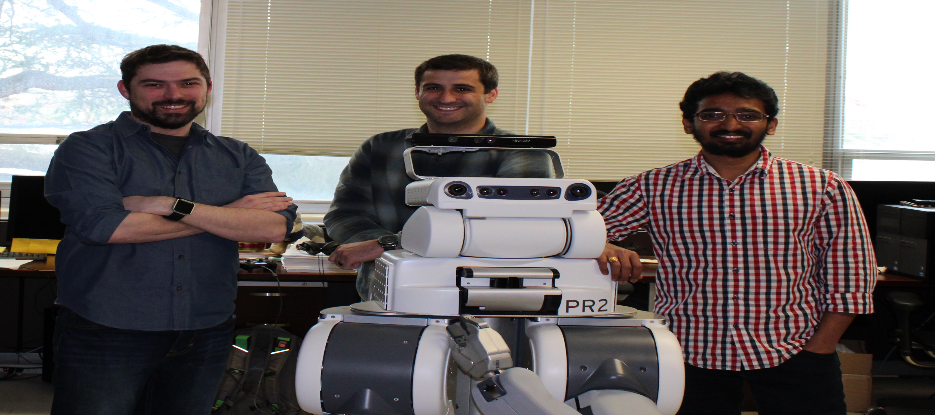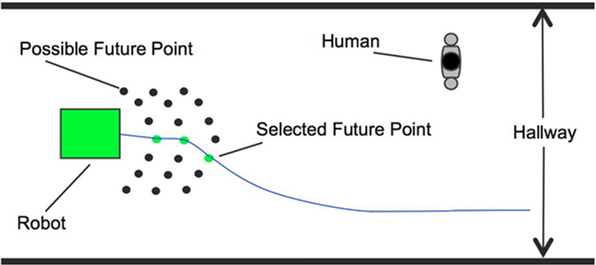
Nevada NASA EPSCoR Highlight
Socially Aware Navigation Using Nonlinear Multi-objective Optimization
Science PI: David Feil-Seifer (University of Nevada, Reno)
Co-PIs: Scott Forer (University of Nevada, Reno) and Santosh Banisetty (University of Nevada, Reno)
For socially assistive robots (SAR) to be accepted into complex and stochastic human environments, it is important to account for subtle social norms. For this project, we proposed a novel approach to socially aware navigation (SAN), which garnered significant interest from the Human-Robot Interaction (HRI) community. We used a multi-objective optimization tool called the Pareto Concavity Elimination Transformation (PaCcET) to capture nonlinear human navigation behavior, which is a novel contribution to the community. We used autonomously sensed, distance-based features that capture the social norms and associated social costs of a given trajectory point toward the goal. Rather than use a finely tuned linear combination of these costs, we used PaCcET to select an optimized future trajectory point associated with a nonlinear combination of the costs. Existing research in this domain concentrates on geometric reasoning and model-based learning approaches that have their own pros and cons.
Our approach is distinct from prior work in this area. In a simulation, we showed that the PaCcET-based trajectory planner not only can avoid collisions and reach the intended destination in static and dynamic environments, but it also considers a human’s personal space in the trajectory selection process.
Left to right: David Feil-Seifer, Scott Forer, and Santosh Banisetty (UNR).
Navigation planner selects a socially optimal short-term trajectory (green dots) to pass a person in the hallway.
Return on Investment (ROI) To Date
Proposals Funded: 1 ($500,000)
Peer-reviewed publications: 1
Presentations: 1
Students impacted, research experience and expertise: 6



